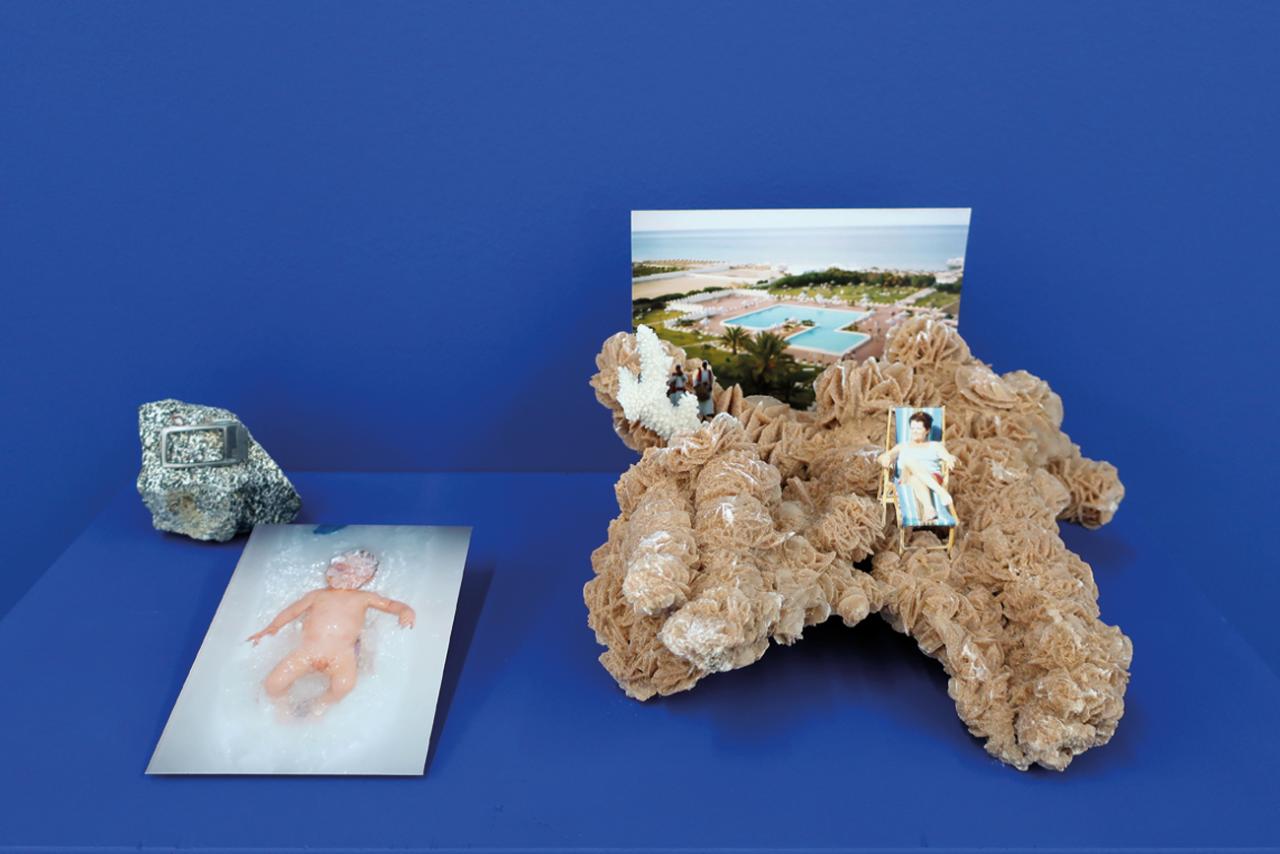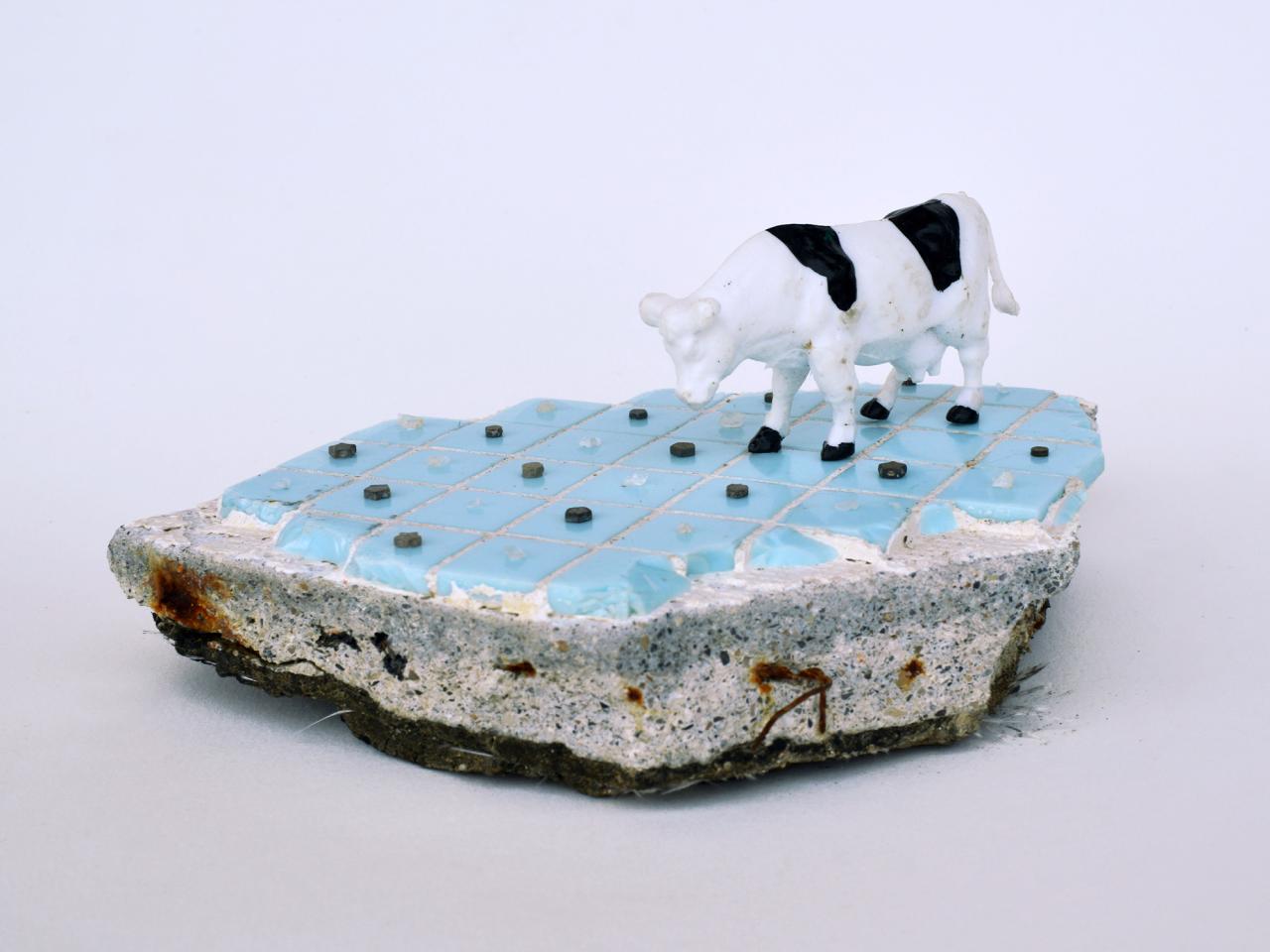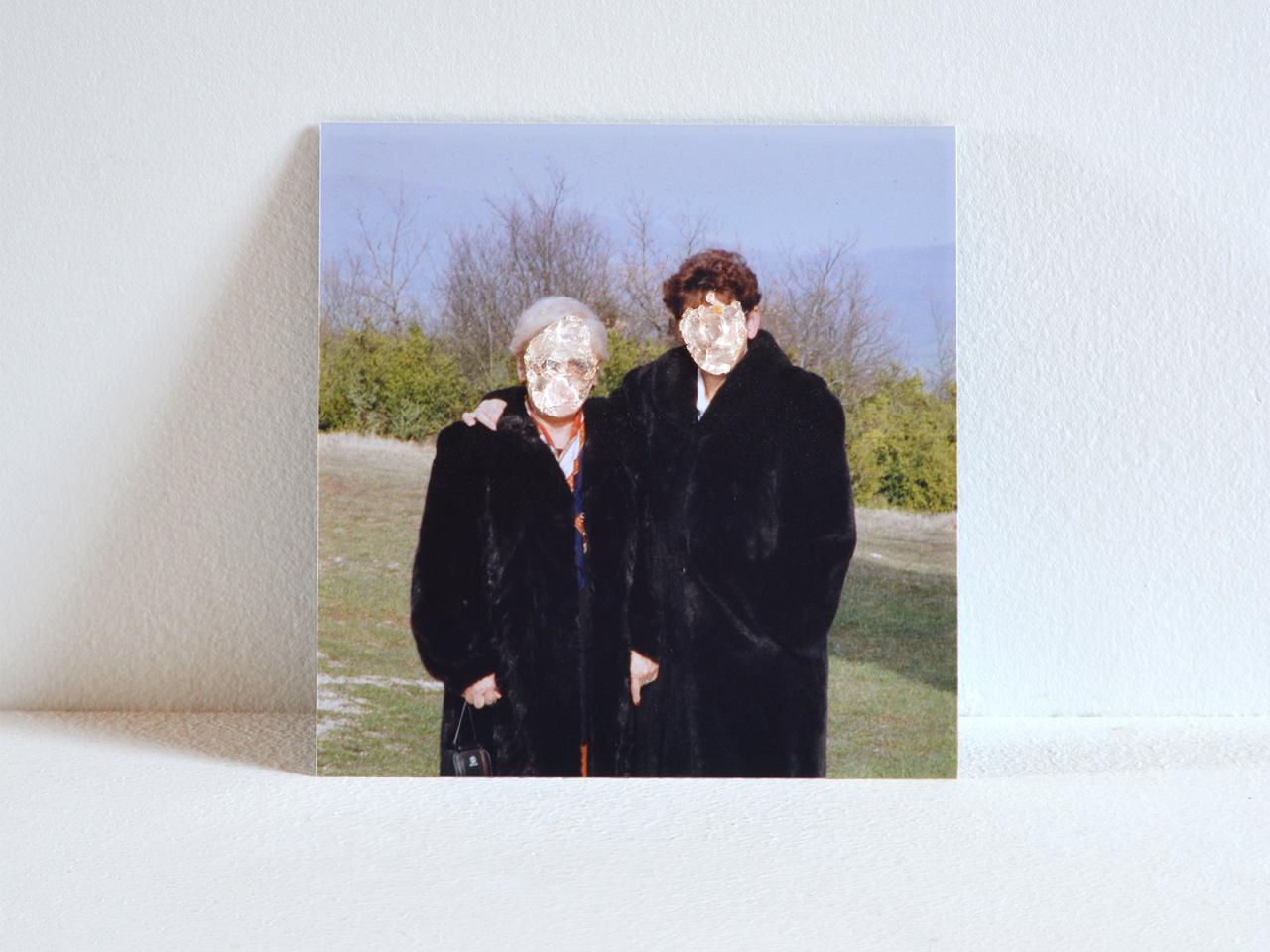Gaëlle Foray
Born in 1978
Lives and works in Plateau d'Hauteville (Ain)



« I make photomontages and volume-based works using a variety of materials: family photographs, fossils, stones, rubble, trinkets. I collect them in nature or I find them at recycling centres, rubbish tips, and in attics. [...]
This method is in some ways similar to a form of anthropology or sociology in which the collecting of artefacts would be the focal point. I select them for their plastic qualities, often without knowing how I will end up using them.[...]
By piecing together narratives and bringing them to light, my assemblages function by contrast: plastic with fossils, industrial ceramics with stones and crystals, pieces of photographs with rubble, low-quality mouldings with the delicacy of fossilised imprints. Hybridisation acts as a detonator, as an impulse for new ideas to appear. [...]
I combine and organise these elements in order to bring stories to life. I re-enact scenes from everyday life or childhood. I question our family cultures and their motifs: family meals, ceremonies, Sunday outings, stereotypical dreams, and habits. More broadly speaking, I comment on our relationship to nature, animals, eating, and the ways in which territorial, agricultural or touristic policies shape us. [...] »
Statement of Gaëlle Foray, 2021
Translated by Lucy Pons, 2022
© Adagp, Paris